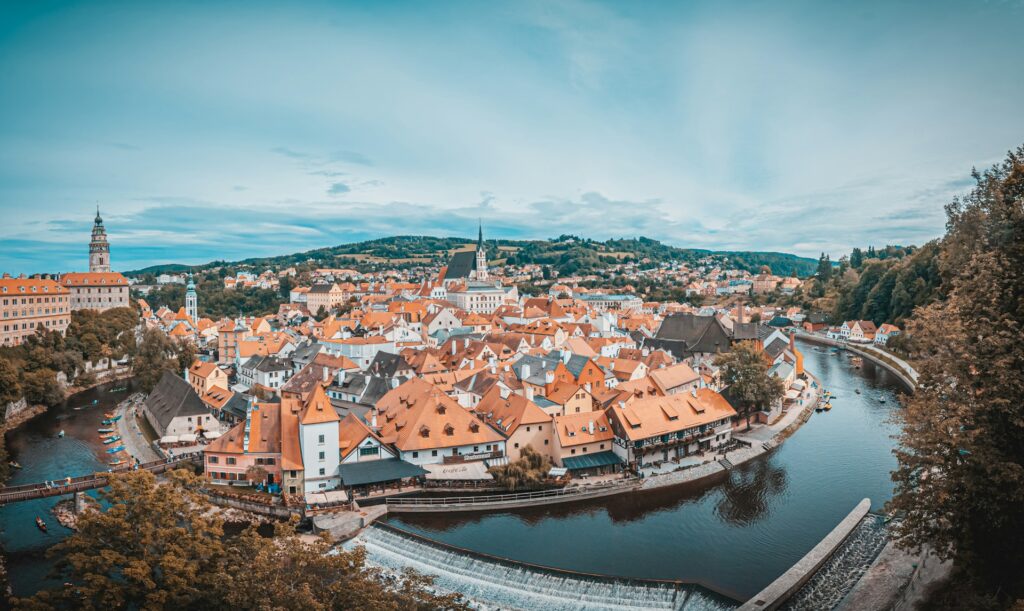Europe remains one of the most fascinating continents to visit in the world, with a rich meld of cultures represented from east to west. This creates a number of unique travel opportunities, whether you want to experience the luxurious island of Ibiza or the natural beauty of Eastern European destinations such as Prague.
Regardless of whether you visit one or several European hotspots, you’ll need to invest time in planning your continental adventure. This can help you simultaneously save money and optimise value.
Of course, sites like Opodo can help you to immediately save money by identifying the cheapest flights to your chosen destination. But what other steps are key to planning your European getaway?
Set Your Budget & Identify The Best Destinations
Minimising the cost of flights and accommodation could prove crucial, as you’ll have to factor in your budgetary constraints to your eventual choice of destination.
In fact, it’s important to create a fixed and realistic budget before you confirm destinations and start to plan your trip in earnest. Although this will introduce restrictions and may make some locations unaffordable, having a finite sum of money to spend makes it much easier to plan and get the most of your travel experience.
Once you have a budget in mind, you can start to compare the travel and accommodation costs associated with different destinations. This will help you to create a shortlist of desirable and realistic locations, at which point you can introduce other criteria and make a more informed choice.
Just remember, you’ll also need to factor in the average cost of food, drink and entertainment in your preferred destinations. You can visit this site to appraise these costs in different countries, while identifying specific regions that may offer the best value for money.

Consider Lesser-Known Destinations That Can Rival Their More Famous Counterparts
When planning your European adventure, it’s easy to gravitate towards well-known destinations like Paris, Rome, and Barcelona. However, Europe is brimming with lesser-known gems that offer equally captivating experiences, often at a fraction of the cost. Exploring these hidden treasures can provide a unique and enriching travel experience while helping you stay within your budget.
The Maldives of Europe: Ksamil, Albania
One such hidden gem is Ksamil in Albania, often referred to as the Maldives of Europe. Nestled along the Ionian Sea, Ksamil boasts pristine beaches, crystal-clear waters, and a tranquil atmosphere that rivals the famous tropical paradise. Unlike the Maldives, however, Ksamil offers this idyllic setting without the hefty price tag, making it an excellent choice for budget-conscious travellers seeking a slice of paradise.
The Enchanting Town of Český Krumlov, Czech Republic
Another lesser-known destination worth considering is Český Krumlov in the Czech Republic. This charming town, with its well-preserved medieval architecture and picturesque setting along the Vltava River, offers a fairy-tale experience reminiscent of Prague but with fewer crowds. Wander through its cobblestone streets, visit the stunning Český Krumlov Castle, and enjoy the local cuisine in a more relaxed and intimate environment.

The Scenic Beauty of Lake Bled, Slovenia
Lake Bled in Slovenia is another hidden gem that can rival more famous European lakes. Surrounded by the Julian Alps, this stunning glacial lake features a small island with a picturesque church and a medieval castle perched on a cliff. The serene beauty of Lake Bled, combined with its outdoor activities like hiking, rowing, and cycling, makes it a perfect destination for nature lovers and adventure seekers alike.
The Historic Charm of Porto, Portugal
While Lisbon often steals the spotlight, Porto in Portugal offers a rich cultural experience with its historic charm and vibrant atmosphere. Known for its port wine, stunning bridges, and colourful Ribeira district, Porto provides a more laid-back yet equally captivating alternative to the capital city. Explore its narrow streets, enjoy a river cruise on the Douro, and savour the local cuisine without the hustle and bustle of larger tourist hubs.

The Undiscovered Beauty of Puglia, Italy
Puglia, located in the heel of Italy’s boot, is a region that remains relatively undiscovered by mass tourism. With its whitewashed towns, ancient olive groves, and stunning coastline, Puglia offers an authentic Italian experience. Visit the trulli houses in Alberobello, relax on the beaches of Salento, and indulge in the region’s delicious cuisine, all while enjoying a more tranquil and affordable holiday.
By considering these lesser-known destinations, you can uncover the hidden beauty of Europe and create unforgettable memories without the crowds and high costs associated with more famous tourist spots. So, venture off the beaten path and discover the unique charm and allure of Europe’s best-kept secrets.
Establish Your Route & Flight Path
Once you’ve created a working budget and have confirmed your precise destination (or destinations), the next step is to calculate your route. If you are going to fly to your chosen European destinations (which remains the most efficient mode of transportation), it’s particularly important that you decide the exact cities you’re going to fly in and out of.
Typically, flying into one city and out of another is the most economical option, while it’s also more efficient than booking a round-trip flight in instances where you intend to visit more than one destination in Europe.
In this case, you should give consideration to the cities that make the most strategic sense, both as entry points and the last stop before you leave. For example, if you intend to visit multiple cities in Italy, you could arrive at the Venice Marco Polo Airport (which often offers cheap flights) but leave from the Naples International Airport in the south at the end of your trip.
Be sure to factor in other considerations too, such as the length of your trip and your precise itinerary once you arrive.
Create A Detailed (But Agile) Itinerary
On the subject of itineraries, you’ll need to have at least a rudimentary travel plan that encompasses the length of your stay, the number of cities or destinations and some of the activities that you want to do.
The most important thing is that this itinerary is detailed but agile, as you’ll most likely need to trim it down or make adjustments both before and during the trip. So, don’t be afraid to cram your days with different activities and landmarks, safe in the knowledge that your plans can be changed with relative ease.
You can look online if you need inspiration when identifying the best things to do in different locations, with Europe home to a huge range of cultural experiences depending on where you visit.
Your itinerary should also include the number of trips you need to make between different destinations and the hotels that you’ll need to stay at. It’s crucial that you retain an overview of this, as you may be able to identify opportunities where you can minimise accommodation changes and save money.
The Rome2Rio website can help in this respect, as this enables you to plot the most efficient and economical routes no matter where you travel in the world.

Be Ruthless When Adjusting Your Plans
If you are going to adjust and alter your travel plans, you’ll need to be ruthless and maintain an open mind throughout the planning process.
This means examining your itinerary with a ruthless eye, and if you start to struggle with your budget or time constraints, you’ll have to cut some experiences or identify ways in which you save further time or money.
If we use the example of visiting Italy, for example, there are any number of cities that you could visit during a single trip. However, some of these may be similar or less important than others, so your best bet is to selectively cut destinations and plan to visit these at another point in time.
Alternatively, you could consider scheduling some cities or destinations as day trips on the way between different locations. For example, if you’re travelling on the train from Venice to Rome, you could stop off in Florence for a few hours and take in some of the region’s impressive architecture and Renaissance art.
Regardless, you’ll need to think creatively and be decisive when finalising your European itinerary, so that you can simultaneously make the most of your travel experience and save money.
The Bottom Line
Europe is a culturally diverse continent, and one that’s home to any number of travel experiences. So, it’s only natural that you should want to book an extended European getaway, but doing so within a finite budget can prove challenging.
Hopefully, by following these tips and allowing enough time to plan your European excursion in detail, you can schedule the trip of your dreams without spending outside of your means or having to compromise too much on your preferred itinerary.





